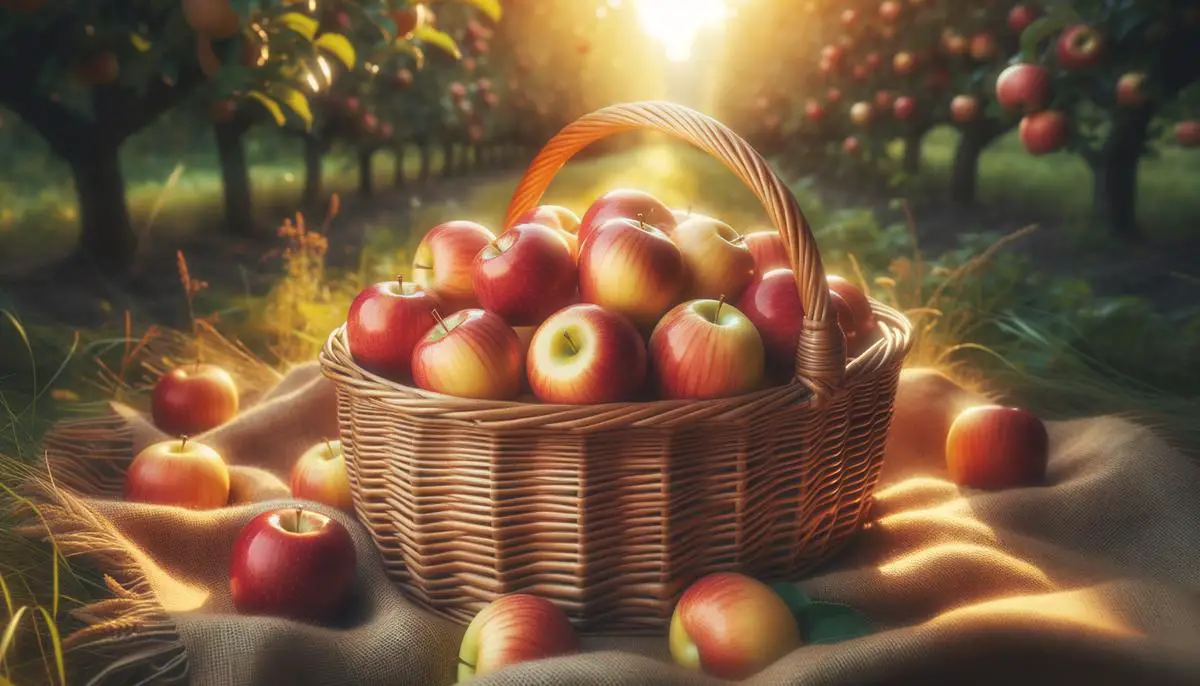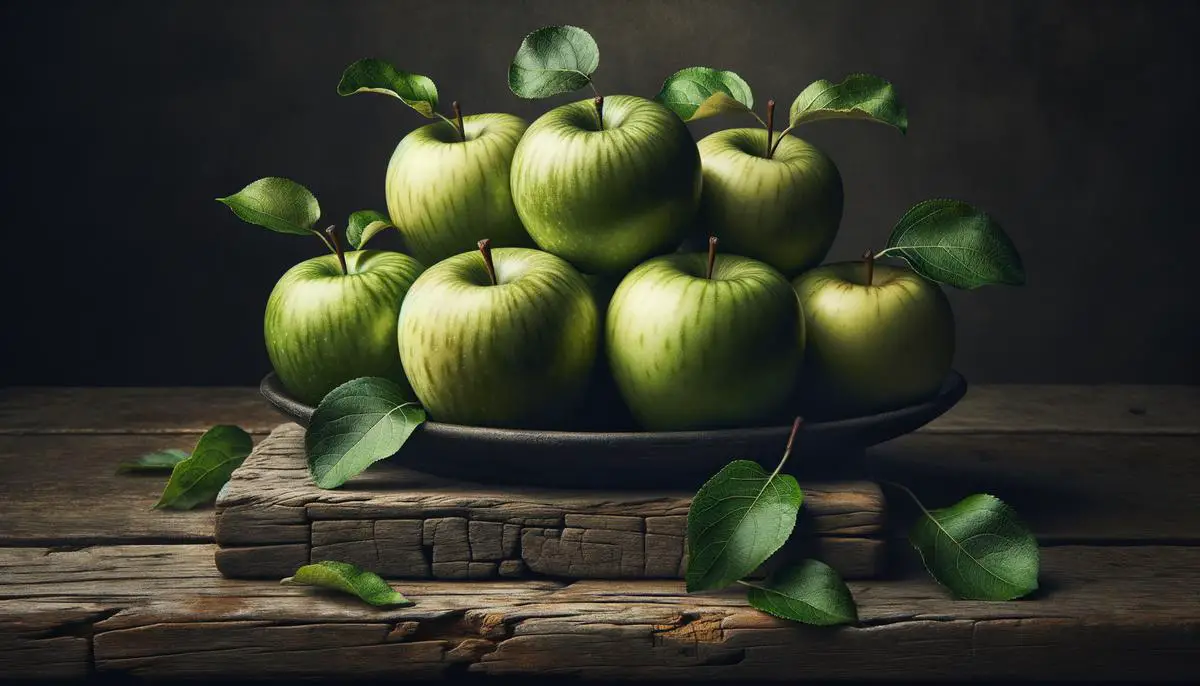Varieties and Trends
Let's talk about Honeycrisp apples. The mere mention of these sweet, crunchy delights sends waves of excitement across a sea of taste buds. Dubbed as the rockstars of the apple world, these juicy fruits have amassed a cult-like following. Originating from a bright spark's idea to mix sugar, spice, and everything nice, Honeycrisps were designed to dazzle us with their shimmering skin and the perfect blend of sweetness and acidity.
Why do these apples merit the hype we've thrown their way in our quest for ultimate flavor experiences? Look beyond the glitz and glamour, the #FoodPorn hashtags, and what you'll find is not just that crackling bite, but a clever twist of agriculture meeting sheer consumer delight. Honeycrisps have soared to great heights mainly due to their cosmic crunch. Not just any old crunch, but a bite so satisfying, it resonates deeply (and maybe even annoys the person next to you). Their rise wasn't without opposition – there were whispers of rebellion against the once-mighty Red Delicious, propelling Honeycrisps into the limelight.
Honeycrisps are a muncher's best friend: exploding with juice, the right mix of sweet and tangy, and wrapped in an aesthetic that screams 'Instagram me!'. These apples weren't just grown; they were engineered for applause. But beneath this crunchy exterior lies a bitter truth – with their fame comes a hefty price tag, doubled down by their finicky nature demanding royal treatment. Often more expensive, some consumers may start wondering if the Honeycrisp is worth emptying their wallets for. Yet, the promise of a Honeycrisp's kiss seems just enough to make us forget our financial woes – after all, who can put a price on crunchy bliss?

Production and Export Challenges
Navigating the tumultuous seas of the apple trade, it appears that the US apple industry is dancing on a knife's edge. For every crunch your teeth sink into a juicy Honeycrisp, there's a murmur of uncertainty whispering through the orchards. Sure, we've seen an uptick to 10.7 billion pounds of apple production. However, this is still 3.5% shy of turning this into a full-blown fruit fiesta compared to the rolling average.1 In the realm of numbers and carefully counted bushels, it seems the art of apple growing includes a brush with uncertainty.
The plot thickens with every exported crate. Those juicy globes of delight making their journey across the globe tell a tale of a shrinking apple export scene. There's something bitter in realizing we're shipping out fewer apples, while simultaneously welcoming a pricier assortment from afar. It's a juggling act where sometimes the apples feel like boomerangs, always coming back with a slightly higher price tag. And yet, despite these challenges in the trade circus, the demand for apples continues.
Still, there's no getting around the facts – gala apples still wear their crown among the kaleidoscope of varieties, their numbers echoing through orchards.2 The rise and fall of varieties like the Red Delicious paint a scripted drama of legacy and change. Within this orchard opera, Honeycrisps are still basking in their spotlight moment, their increased production numbers serenading producers with promises of golden days ahead amidst the backdrop of trade uncertainties. It's as if amidst the churn, the apple industry perseveres, thriving on its ability to continually reinvent its cast, ensuring that there's always another variety ready to take center stage in the grand ballet of the apple market.
The Call for Organic
And then comes the debate that's juicier than a freshly plucked organic Honeycrisp: are organic apples paving the way for a shining, crunchy future, or are they merely a trendy blip lost in a maze of supermarket aisles? Everyone's got an opinion, and no one wants to compromise on taste or morals. According to the stats and whispers from the wind-blown orchards, organic apples, with their chemical-free allure and eco-friendly halo, have seen a surge. The U.S, Canada and European markets can't seem to get enough, with their crisp charm indicating a shift toward healthier, cleaner crunches.
Traditional produce now seems outdated, with organic apples being heralded as the hero of modern munching. Organic apples are seemingly sprouting in every consumer's backyard, buoyed by images of dew-kissed apples devoid of synthetic pesticides. By 2021, organically grown apples had muscled up, commandeering about 7% of U.S. apple acreage.3 A hefty achievement, when considering they weren't worth the soil they were grown in just a decade prior. But here's the rub: as scans down supermarket aisles become pricier by the season, a vortex of skepticism swirls around the staying power of organics. Despite the growth, there's the monumental task of convincing every consumer to swap out a few extra bucks permanently in their grocery budget for those eco-pedigreed orbs.
Navigating between economic feasibility and environmental activism, organic apples have skin in the game, but is it enough to dethrone the conventionally grown kings of the orchard? With Asia-Pacific nibbling away over 62% of global apple consumption,4 eyes turn to giant markets like China and the palates they'll cater to next. Organic may be scripting a remarkable underdog victory lap, but the question lingers – is this a fleeting fable or a legacy in the making?

In essence, amidst all discussions on trends, production challenges, and organic versus conventional debates lies one unshakeable truth: our collective love affair with apples continues unabated. Whether it's the allure of a Honeycrisp or the reliability of a Gala that captures your heart, this fruit saga reminds us that sometimes life's simplest pleasures—like biting into an impeccably crunchy apple—are often its most profound.
- United States Department of Agriculture. Noncitrus Fruits and Nuts: 2021 Summary. 2022.
- United States Department of Agriculture. Noncitrus Fruits and Nuts: 2021 Summary. 2022.
- United States Department of Agriculture. Certified Organic Survey: 2021 Summary. 2022.
- Shahbandeh M. Leading apple producing countries worldwide in 2021/2022. Statista. 2022.
